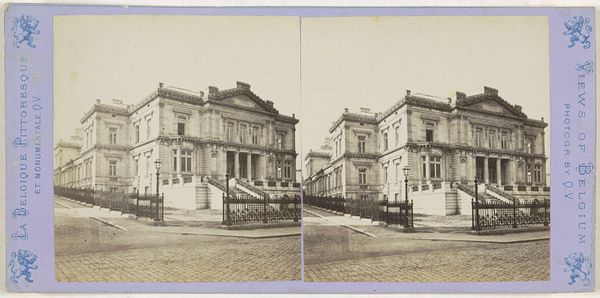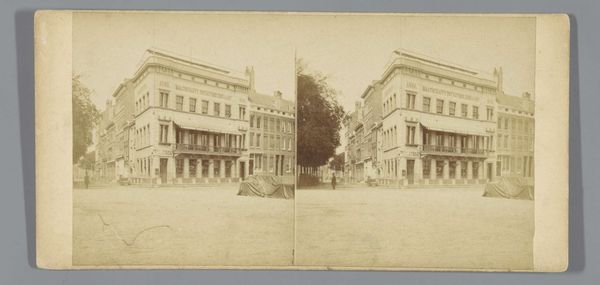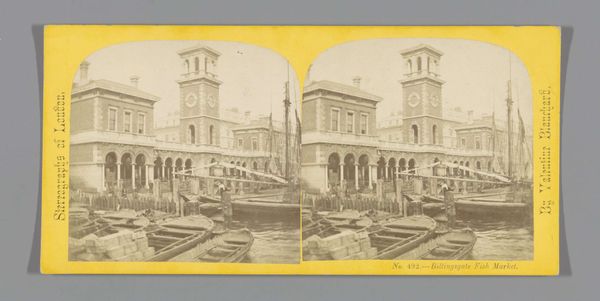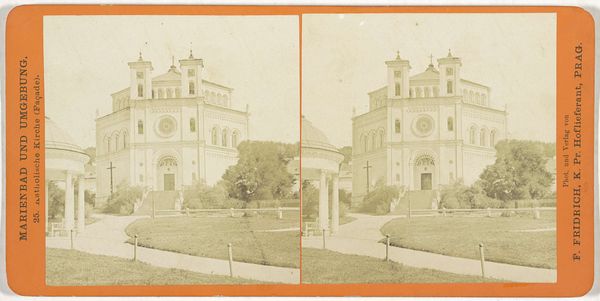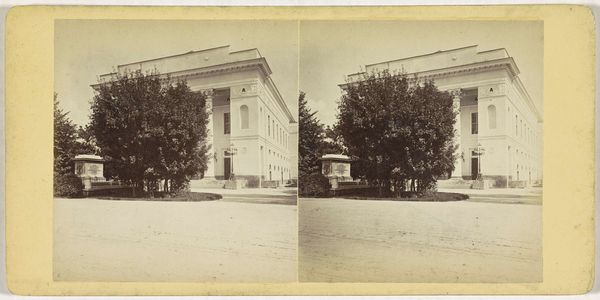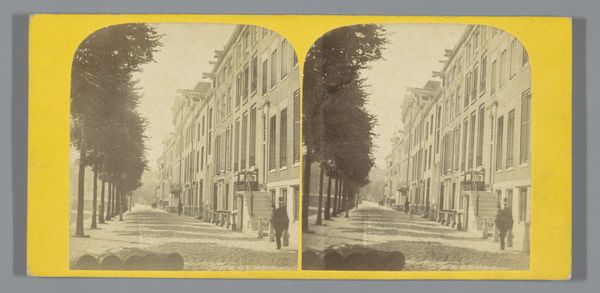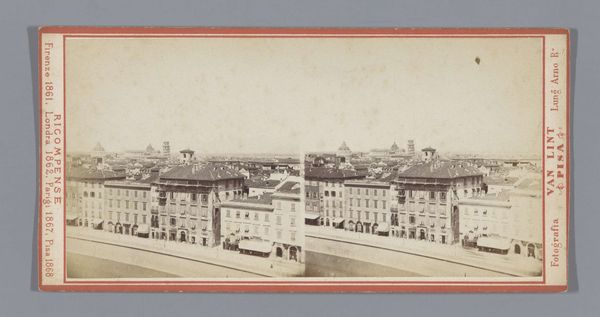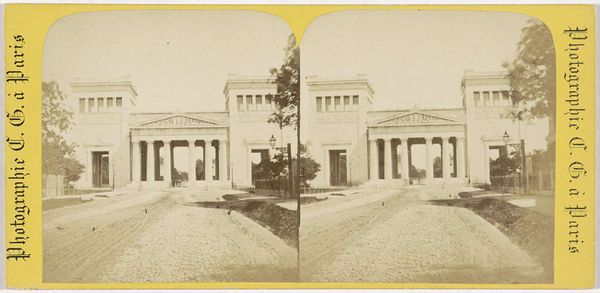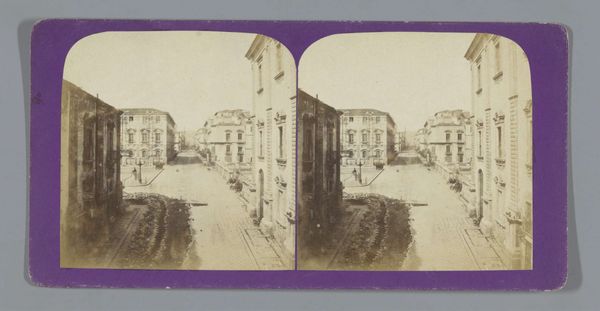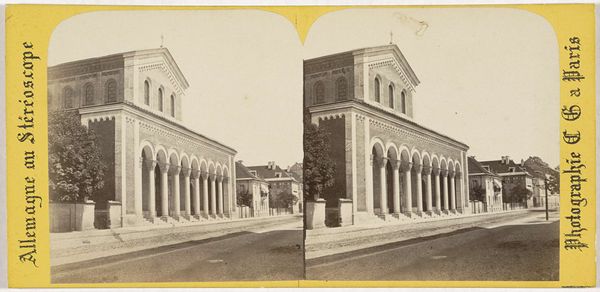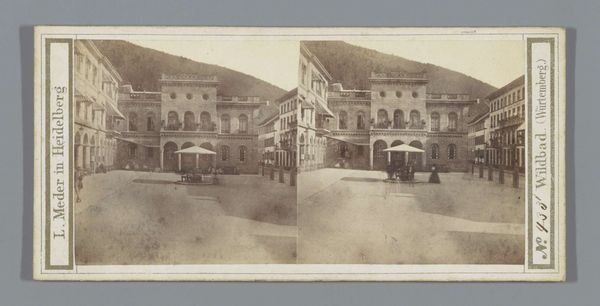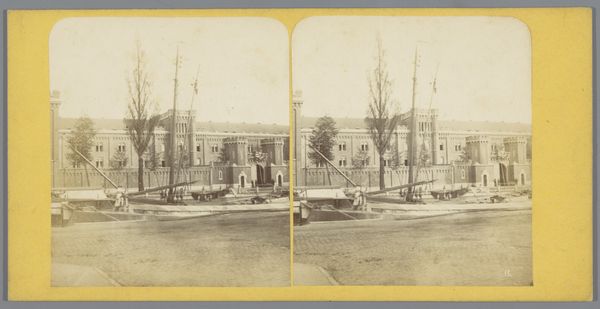
photography, albumen-print
#
landscape
#
photography
#
cityscape
#
albumen-print
Dimensions: height 86 mm, width 175 mm
Copyright: Rijks Museum: Open Domain
Curator: The scene appears static, almost ghostly. It’s as if time stands still, rendered in these sepia tones. What a remarkable visual register. Editor: Indeed. What strikes me is the painstaking labor that must have gone into producing an albumen print like this around 1862 or 1863. Each stage from the collodion negative to the printing demanded a certain level of alchemical craft. This view captured by Jean Andrieu showcases a Russian church in Nice. Curator: Notice the photographic process renders an utterly flat affect. I am immediately drawn to the juxtaposition between the Byzantine architectural forms and the surrounding generic facades. Consider this work as a commentary on style and how certain forms articulate complex geopolitical conditions of its time. Editor: Certainly. Consider also that building materials like stone and mortar and how they were procured and assembled, not to mention how transporting Russian Orthodox aesthetics into a French urban environment required significant resources and skilled labor, creating this interesting interplay between place, style, and work. Curator: I suppose the real question is what does such transposition mean structurally for a viewer encountering this building on an emotional and symbolic level? Editor: Absolutely. And what meanings do the workers who labored to assemble such hybrid space extract while producing something that may well remain estranged and alienating from them? This albumen-print speaks both about a surface and all that lies beneath its creation. Curator: In that case, what Andrieu manages to capture goes beyond representation itself by revealing hidden and powerful relationships that underpin both architecture and history. Editor: Very true; through an analysis that accounts for its production process, "Gezicht op een Russische kerk in Nice" offers viewers a deeper understanding of not only what’s depicted but also what’s entailed and the conditions within which the photographic act occurred.
Comments
No comments
Be the first to comment and join the conversation on the ultimate creative platform.
